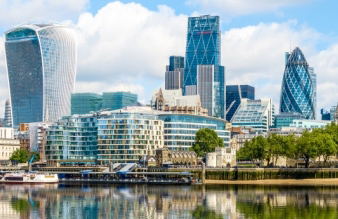Industrial Units & Warehousing
Key benefits
Inclusions and Exclusions
A lease agreement for industrial space will typically include:
- Unrestricted access to the premises, which are usually gated and barrier controlled.
- Warehousing and industrial units fitted with loading doors, dock levellers, and lifts in multi-storey units. However, any alterations will require written permission from landlord and sometimes from the local authorities.
- Units usually include a small office / reception area, and some industrial estates offer access to shared facilities too, such as kitchen and rest areas.
- Parking space, including HGV parking bays.
The following exclusions usually apply to industrial property lettings:
- Business rates and service charges (maintenance, insurance, management fees, signage, etc.).
- Utility bills.
- Legal costs.
- The cost of repairing, replacing, or maintaining fixtures and internal fittings.
- Cleaning / Janitorial services.
- Regular inspections (electrical, gas, health and safety, fire risk assessments, etc.).
Typical Occupier Profile
Industrial and warehousing space appeals to companies in a wide range of industry sectors, such as distribution and logistics, construction, food and drink, recycling, retail, and manufacturing. The rise of e-commerce seen in recent years has dramatically increased demand for industrial and warehousing space, as online entities seek space to store products prior to distribution. According to Deloitte, the largest occupiers of industrial space in London include retail and trade counters, motor vehicle businesses (showrooms, repair garages, vehicle hire, etc), manufacturing, catering and food, and warehouse and storage.
Industrial / Warehouse Space in London
According to a Deloitte report, there are approximately 30 million square feet of industrial space in Inner London, which accommodate more than 3,200 industrial units. The average size of most units ranges between 1,500 and 5,000 square feet.
Industrial space distribution in central London is as follows:
Newham, Tower Hamlets, Southwark, Greenwich, Wandsworth, Islington, Camden, Lewisham, Hackney, Hammersmith & Fulham, Kensington & Chelsea, Westminster
- Newham has the highest inventory at 5.1 million sq/ft, with most units owned by property companies
- Tower Hamlets has 4.9 million sq/ft, also mostly owned by property companies
- Southwark has 4.1 million sq/ft, with many site owned by Network Rail
- Greenwich: 3.9 million sq/ft
- Wandsworth: 2.6 million sq/ft
- Islington: 2.3 million sq ft
- Camden: 1.8 million sq/ft
- Lewisham: 1.2 million sq ft
- Hackney: 1 million sq ft
- Hammersmith & Fulham: 800,000 sq/ft, mostly owned by the public sector
- Kensington & Chelsea: just below 500,000 sq/ft, mostly owned by local government
- Westminster: 100,000 sq/ft, mostly owned by private investors
In addition, the Outer London Commission identifies several major industrial/business improvement districts:
Park Royal London Riverside Garratt (Lambeth)West & South London South Wimbledon (Merton)Beddington (Sutton)
- Park Royal (including parts of Ealing, Brent, and Hammersmith & Fulham), which covers an area of 500 hectares and provides industrial accommodation to 2,000 companies
- London Riverside, with nearly 400 hectares and currently home to 300 businesses
- Garratt (Lambeth), a smaller site with approximately 6 hectares and 70 businesses
- West & South London: White City, Nine Elms, Battersea, shortly to be developed as part of the City in the West plan
- In Greater London: South Wimbledon (Merton), with 32 hectares and 200 businesses, and Beddington (Sutton) with 130 hectares and over 170 businesses
Typical Costs and Budgeting Considerations
Although rental values vary greatly depending on location, designated use, and quality of the premises, the following average rates apply to most industrial / warehousing units in London:
West London: East London: North and North East London South & Greater London:
- West London: £7 to £13 sq/ft
- East London: £8-£10 sq/ft
- North and North East London: £8-£13 sq/ft
- South & Greater London: £9-£11 sq/ft
Moreover, if an industrial unit is part of a Business Improvement District, an additional levy will be applied, which may be expressed as a percentage of the applicable business rates, as a membership fee, or based on a tier system.
Other Considerations
Business owners who require industrial space in London should be familiar with the key trends that apply to this property sub-market. Firstly, most of the available supply consists of medium-sized and large logistics and big-box units, and there is a very limited supply of new units under 100,000 square feet. This means that prospective tenants looking for small units will need to be aware of the current market imbalance and may be required to rent units above their initial space requirements.
Moreover, the supply of big shed space is quickly dwindling, and the only boroughs where supply is on the rise are in Greater London (Bexley, Bromley and Sutton), whereas the sharpest declines are evident in Hackney, Islington, Westminster, Tower Hamlets, and Camden.
More articles from the Office Solutions Section

Startup Office Space
London offers a diverse mix of office space for startups and freelancers, who can choose among co-working spaces, serviced offices, hot desks, accelerators, and incubators.
Access to first-class facilities. Flexible contracts. A wide variety of locations & specifications. Environment created for startups. Fosters growth, creativity, and collaboration.

Hot Desking
Along with global entrepreneurial hubs like San Francisco, New York, or Singapore, London is considered one of the best locations in terms of the hot desking options available in the city.
Fosters sharing and collaboration. Encourages creativity. Expands professional networks. Provides staff with freedom and flexibility. Hourly, daily, weekly or longer packages. Cost effective.

Short Term Office Space
Short term office space is suited to small companies, and particularly to start-ups and spin-out companies that have moved beyond the initial stages.
Short contracts and easy terms. Fixed rental costs and no set-up fees. Flexible contract terms. Facilitates business growth and innovation. Access to networking opportunities with other businesses and investors.